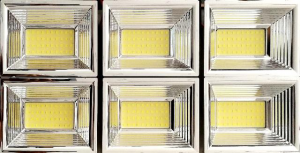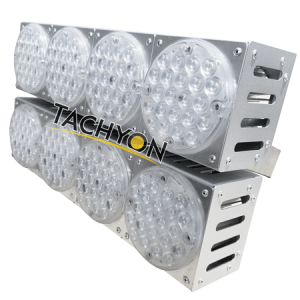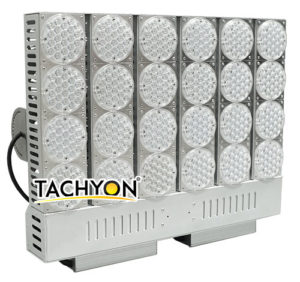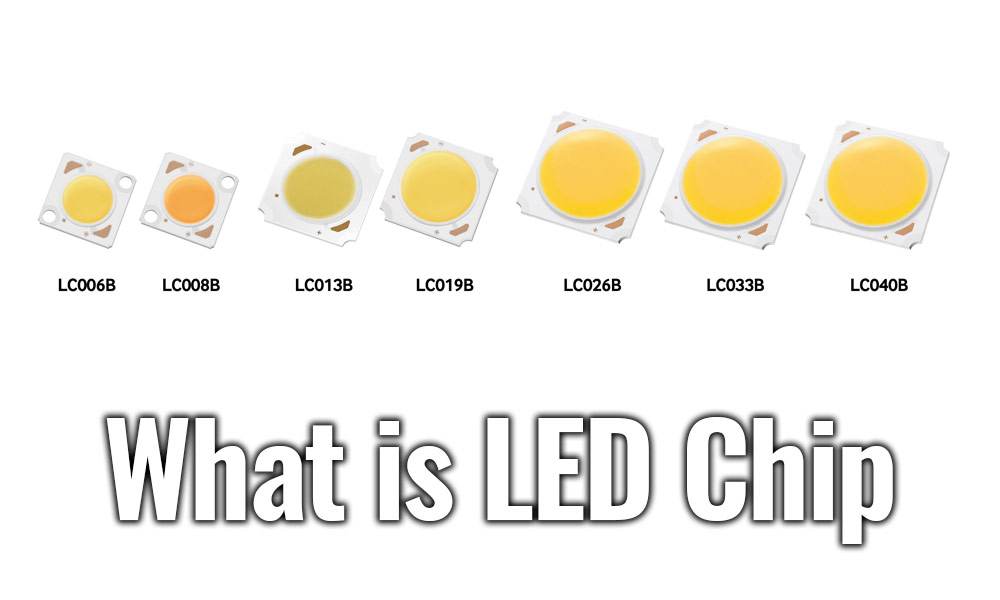- Turn-on delay time td(on) (Turn-on delay time) and test:
The time interval between the lowest specified value of the leading edge of the input pulse and the lowest specified value of the leading edge of the output pulse. The measurement method is the same as the switching time.
- Rise time tr (Rise time) and test:
The time interval between the lowest specified value and the highest specified value of the leading edge of the output pulse. The measurement method is the same as the switching time.
- Turn-on time ton (Turn-on time) and test:
The time interval from the lowest specified value of the leading edge of the input pulse applied by the device to the highest specified value of the leading edge of the output pulse. ton = td(on)+tr
The measurement method is the same as the switching time.
- Turn-off delay time td(off) (Turn-off delay time) and test:
The time interval between the highest specified value of the back edge of the input pulse applied by the device to the highest specified value of the back edge of the output pulse. The measurement method is the same as the switching time.
- Fall time tf Fall time and test:
The time interval between the highest specified value and the lowest specified value of the trailing edge of the output pulse.
The measurement method is the same as the switching time.
- toff Turn-off time
The time interval between the minimum specified value of the back edge of the input pulse applied by the device to the minimum specified value of the back edge of the output pulse. toff =td(off)+tf
The measurement method is the same as the switching time.
- Luminous flux Φv (Luminous flux) and test:
The luminous flux emitted by the optical window of the device when the forward current through the light-emitting diode is a specified value. The amount of light emitted by the light source per unit time, the unit is lumen, and the symbol is lm. Φv=dQv/dt
Test purpose: to measure the luminous flux and luminous efficiency of the tested LED device under specified conditions.
Note 1:
The light radiation emitted by the tested LED device is reflected multiple times by the wall of the integrating sphere, resulting in a uniform surface luminous intensity proportional to the luminous flux. A detector located on the spherical wall measures the luminous intensity of this surface, and a diffuser screen blocks the light. , Do not make the detector directly irradiate the optical radiation of the device under test;
Note 2:
The area of the device under test, the diffuser screen, the opening and the ball area should be relatively small, and the inner wall of the ball and the surface of the diffuser screen should be relatively small.
Uniform diffuse reflection coating with high reflectivity (min 0.8). The combination of the ball and the detector should be calibrated, taking into account the peak emission wavelength and luminous flux changes due to power consumption.
Note 3: It can also be measured with a variable angle photometer.
Measurement procedure
The device to be measured is placed at the entrance of the integrating sphere so that the light does not reach the detector directly. The specified forward current IF is applied to the device under test, and the photometric detection system measures the luminous flux. The luminous flux value divided by the product of the forward current IF and the forward voltage VF is the luminous efficiency.
Stipulated conditions
Environment and tube base temperature, forward current.
- Luminous flux efficiency ηv (Luminous flux efficiency) and test:
Referred to as luminous efficiency (Luminous efficiency). The ratio of the luminous flux Φv emitted by the device to the electric power of the device (forward current IF multiplied by the forward voltage VF): ηv =Φv/(IF²VF) The measurement method is the same as the luminous flux.
- Radiant power Φe (Radiant power) and test:
Radiant power is also often called radiant flux, which is the power emitted, transmitted and received by the radiation source when the forward current passing through the light-emitting diode is a specified value. The unit is watts (W). For example, t represents time, and radiant flux is defined as Φe = dQe/dt Test purpose: to measure the radiant flux (power) and radiation efficiency of the tested LED device under specified conditions.
Note:
The light radiation emitted by the tested LED device is reflected multiple times by the wall of the integrating sphere, resulting in a uniform surface radiation output that is proportional to the radiant flux. A detector located on the spherical wall measures the surface radiation output. The screen blocks the light and prevents the detector from directly irradiating the optical radiation of the device under test. The area of the device under test, the diffuser screen, the opening and the ball area should be relatively small, and the inner wall of the ball and the surface of the diffuser screen should have a uniform high reflectivity diffuse reflection coating (minimum 0.8). The combination of the ball and the detector should be calibrated with a radiation standard, measured in watts. The peak emission wavelength and radiant flux changes due to power consumption should be considered.
Measurement procedure
The device to be measured is placed at the entrance of the integrating sphere. Do not allow light to reach the detector directly. Apply the specified forward current IF to the device under test. The radiation detection system measures the radiation flux and divides the value of the radiation flux by the forward current IF The product of VF and the forward voltage is the radiation efficiency.
Stipulated conditions
Environment and tube base temperature; forward current.
- Radiant power efficiency ηe Radiant power efficiency and test:
Referred to as Radiant efficiency. The ratio of the radiation power emitted by the device to the electrical power of the device (forward current multiplied by the forward voltage): ηe =Φe/(IF²VF) The measurement method is the same as the radiation power.
- Luminous (or radiant) intensity Iv Luminous (or Radiant) intensity
The light (or radiation) flux emitted by a light source in a unit solid angle can be expressed as: light intensity Iv [cd] = luminous flux d Φ/solid angle dΩ [sr] in the solid angle, and the unit is candela (cd). The concept of luminescence (or radiation) intensity requires the assumption that the radiation source is a point radiation source, or its size and the area of the photodetector are sufficiently small compared to the distance from the photodetector. In this case, the surface of the photodetector The illuminance of light (or radiation) follows the inverse squared distance theorem, namely E=I/d2. Here I is the intensity of the radiation source and d is the distance from the center of the radiation source to the center of the detector. Call this situation a far-field condition.
However, in many applications, the distance used when measuring LEDs is relatively short, the relative size of the light source is too large, or the angle formed by the detector surface is too large, this is the so-called near-field condition. At this time, the light (or radiation) illuminance measured by the photodetector depends on the correct measurement conditions.
- Averaged LED intensity
The ratio of the flux Φ irradiated on the photodetector at a certain distance from the LED to the solid angle Ω formed by the detector. The solid angle can be calculated by dividing the area S of the detector by the square of the measuring distance d. I=Φ/Ω=Φ/(S/d2)
CIE recommends standard conditions A and B (see 7.2.1.2) to measure the average LED intensity under near-field conditions, which can be represented by the symbols ILED A and ILED B, respectively, and the symbols ILED Ae and ILED Av represent the measured value of standard condition A. Average LED radiant intensity and average LED luminous intensity.
25, radiance Le radiance
The radiation intensity dIe of a point with an area of dS on the surface of the radiation source along a given direction is in a plane perpendicular to the given direction.
The ratio of the orthographic projection area is defined as the radiance in a given direction. The unit is W/(sr²m)
- Ee irradiance
The luminous flux per unit area of the illuminated object illuminated by the luminous body. Illumination is the ratio of luminous flux to the illuminated surface. 1 lux of illuminance is 1 lumen, and the luminous flux is evenly distributed in an area of one square meter. The unit is Lux (Lux, lx) Lm/m.
Illuminance E [lx] = luminous flux falling on a certain area [lm] / area of the illuminated surface [㎡] = light intensity [cd] / (distance [m])
- Luminous (or Radiant) diagram
Reflect the spatial distribution characteristics of the luminous (or radiation) intensity of the device: Iv(or Ie)=f(θ)
Note 1:
Unless otherwise specified, the luminescence (or radiation) intensity distribution should be specified in the plane including the mechanical axis Z.
Note 2:
If the luminous (or radiation) intensity distribution graph has the characteristic of rotational symmetry with the Z axis, the luminous (or radiation) intensity space
The distribution map only specifies one plane.
Note 3:
If the Z axis is not rotationally symmetrical, the luminous (or radiation) intensity distribution at various angles θ should be required, and the requirements for the X, Y, and Z directions can be defined in detail.
- Half-intensity angle θ1/2 Half-intensity angle In the luminous (or radiation) intensity distribution graph, the luminous (or radiation) intensity is greater than the angle formed by half of the maximum intensity.
- Δθ Misalignment angle
In the luminous (or radiation) intensity distribution graph, the angle between the maximum luminous (or radiation) intensity direction (optical axis) and the mechanical axis Z.
- Peak-emission wavelength λp Peak-emission wavelength The wavelength of the maximum spectral radiant power.
- Spectral radiation bandwidth Δλ Spectral radiation bandwith The wavelength interval where the spectral radiation power is greater than or equal to half of the maximum value.
- Spectral power (energy) distribution P(λ) Spectral power distribution
In the optical radiation wavelength range, the radiation power distribution of each wavelength.
- Lv luminance
The ratio of the luminous intensity dIv of a panel at a point on the surface of the light source in a given direction to the orthographic projection area of the panel on a plane perpendicular to the given direction. The unit is candela per square meter (cd/m2) Lv=dIv /(dScosθ)=d2(dΩdScos θ)
34, Ev illuminance
The ratio of the luminous flux d Φv on the face element irradiated at a point on the light receiving surface to the area dS of the face element. The unit is lux (lux), usually expressed as lx. Ev=dΦv /dS.
The illuminance of 1 lux is the luminous flux of 1 lumen evenly distributed in an area of one square meter. Lm/m
Illuminance E [lx] = luminous flux falling on a certain area [lm] / area of the illuminated surface [㎡] = light intensity [cd] / (distance [m]) 2
- Qe radiant energy
The energy emitted, transmitted and received in the form of radiation, in J (Joule).
- The minimum and maximum storage temperature (Tstg)
Minimum and maximum working environment temperature or tube base temperature (Tamb or Tcase)
- Dominant wavelength
Any color can be regarded as a color that is matched by a certain spectral color and a reference light source (such as CIE standard light source A, B, C, etc., energy light source E, standard illuminator D65, etc.) in a certain ratio. This The spectral color is the dominant wavelength of the color. The dominant wavelength of the color corresponds to the hue (psychological quantity) of the color observed by the human eye. If the chromaticity coordinates of the tested LED device have been obtained, the equal-energy white E light source (x0 = 0.3333, y0 = 0.3333) can be used as the reference light source to calculate the dominant wavelength of the color. When calculating, according to the slope of the straight line connecting the reference light source chromaticity point and the sample color chromaticity point on the chromaticity diagram, look up the table to read the intersection of the straight line and the spectral locus, and determine the dominant wavelength.
- Purity
The closeness of the sample color to the dominant wavelength spectrum color indicates the purity of the sample color. On the CIE-1931 chromaticity diagram, the ratio of the distance from the reference light source chromaticity point to the sample chromaticity point and the distance from the reference light source chromaticity point to the spectral chromaticity point is used to express purity on the color dominant wavelength line. The purity of the color is basically the same as the color saturation observed by the human eye.
- Tc Color temperature
When the color presented by the light radiation of the light source is the same as the color radiated by the black body at a certain temperature, the temperature of the black body (TC) is called the color temperature of the light source. In order to obtain the color temperature of the light source, it is necessary to obtain its chromaticity coordinates first, and then obtain the color temperature from the ISO color temperature line derived from CIE1960UCS on the chromaticity diagram. For a light source whose relative spectral power distribution deviates far from the relative spectral power distribution of a black body, the chromaticity coordinates and the closest black body temperature are used to express the correlated color temperature of the light source, and the correlated color temperature is calculated on the color temperature line.
- Luminous intensity (I):
The luminous flux of the light source within a solid angle in a certain direction. Generally speaking, a light source emits its luminous flux with different intensities in different directions, and the intensity of visible light emitted in a specific direction is called light intensity. The unit is candela (candela, cd)
Light intensity I [cd] = luminous flux in solid angle / solid angle Ω[sr]
- Luminance (also called Luminance, L):
The brightness of a light source or an illuminated surface refers to the luminous flux per unit surface of a luminous body per unit solid angle per unit area in a specific direction.
The light intensity density in one direction can also be said to be the brightness of the light source or illuminated surface perceived by the human eye. The unit is candela, per square meter (cd/m). Luminance L [cd/㎡] = light intensity [cd] / the area of the illuminated surface seen [㎡]
- Luminous efficiency
(Luminous efficacy, η)
Abbreviated as light efficiency, it is the ability of an electric light source to convert electrical energy into light, which is expressed by dividing the emitted luminous flux by the power consumption. Represents the efficiency of the light source converting the consumed electrical energy into light, the unit is lumens per watt Lm/w Luminous efficiency η[lm/W] = generated luminous flux [lm] / power consumption [W]
- Co1or Temperature
The color temperature of a light source is defined as the absolute temperature of the “black body radiator” with the same light color. This temperature can be found on the Planckian locus on the chromaticity diagram. The higher the temperature of the standard black body, the more blue components in the spectrum of light radiated from, and the less red components. Take an ordinary incandescent bulb whose light color is warm white as an example, its color temperature is 2700K, and the color temperature of daylight fluorescent lamps is 6000K. The unit is absolute temperature (Kelvin, K)
- Light color
The light color of a lamp can be simply expressed in terms of color temperature. Light colors can be divided into three main categories: warm white 3000K, positive white 5000K~6500K, cool white 6500K~7500K.
Even if the light color is the same, there may be great color rendering performance differences between lamp species due to the different spectral composition of the light emitted.
- Color rendering
It is generally believed that artificial light sources should correctly perceive colors by the human eye, just like looking at things under the sun. Of course, this depends on the application occasion and purpose and has different requirements. This criterion is the color rendering characteristics of the light source, called It is the “general color rendering index (Ra)”.
The average color rendering index is the relative difference between the color of an object illuminated by a certain light source and its color illuminated by a reference light source. The numerical evaluation method is to compare the reference light source and the light source to be measured on the eight color samples specified in DIN 6169 and quantify the difference; the smaller the difference, the better the color rendering of the light source to be measured A light source with an average color rendering index Ra of 100 can make various colors appear as the colors illuminated by the reference light source. The lower the Ra value, the more distorted the displayed color.
- Average life: hours H
Refers to the number of hours when a batch of bulbs to 50% of the quantity is damaged.
- Economic life:
Considering both the damage of the bulb and the attenuation of the beam output, the integrated beam output is reduced to a specific number of hours. This ratio is 70% for outdoor light sources, and 80% for indoor light sources such as fluorescent lamps. Unit is hour H
- Light and radiation:
Light refers to the bright electromagnetic radiation that the human eye can perceive. It can also be said to be the part of the entire electromagnetic radiation spectrum that the human eye can see; the wavelength of this part is distributed from 360 to 830 nm, which only accounts for the known electromagnetic radiation spectrum. It’s a very small part.
- Luminaire efficiency
Lamp efficiency (also known as lamp light output ratio) is an important standard used to evaluate the energy efficiency of lamps. Its value is the quotient obtained by dividing the luminous flux emitted by the luminaire equipped with the light source by the luminous flux emitted by the installed light source itself .
- Invisible Light
Compared with visible light, electromagnetic radiation with a wavelength beyond 360 to 830nm is called invisible light. Electromagnetic waves with a wavelength less than 360nm are most commonly known as ultraviolet rays, and others include x-rays, r-rays, and cosmic rays; electromagnetic radiation greater than 780nm includes infrared rays And radio waves, etc.
- Spectrum
The distribution of light in the order of wavelength is called the spectrum. Each light source can display its power spectrum distribution on the spectrum according to its wavelength composition. The spectral energy distribution of sunlight and incandescent bulbs is a continuous curve , And the general discharge lamp has a discontinuous curve.



